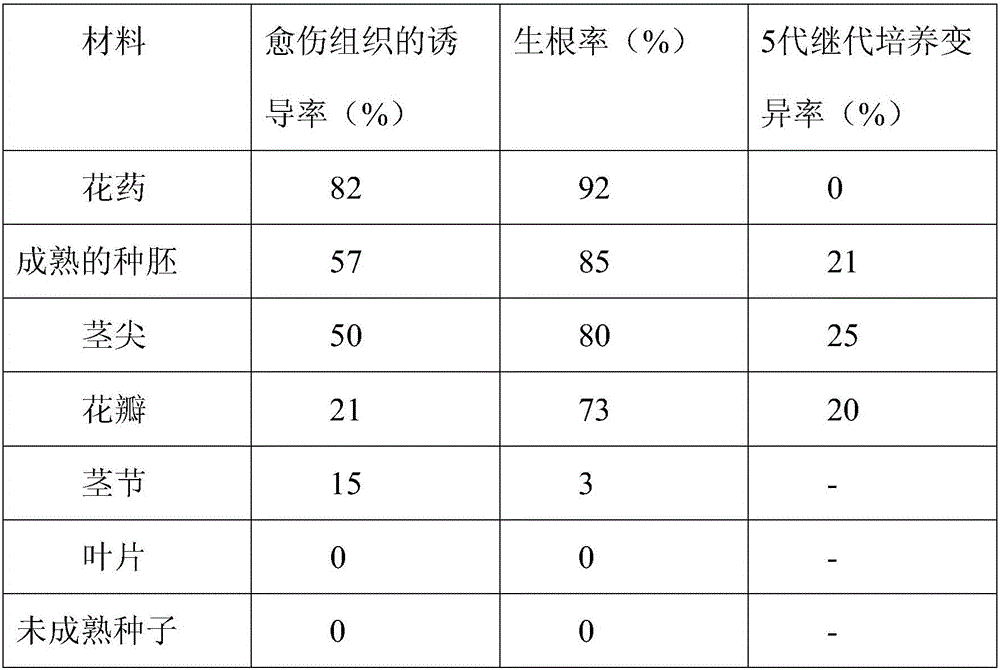A kind of Iris free pollen culture method
A technology of pollen culture and culture medium, applied in the field of plant tissue culture, which can solve the problems of limitations, difficulty in harvesting mature seeds, difficulty in seed collection, etc., and achieve the effects of fast speed, genetic stability and low mutation rate
- Summary
- Abstract
- Description
- Claims
- Application Information
AI Technical Summary
Problems solved by technology
Method used
Image
Examples
specific Embodiment 1
[0033] A method for cultivating free pollen of Iris japonica, comprising:
[0034] 1) Selection and disinfection of explants: get the anthers in the single-nucleus marginal stage and carry out disinfection treatment;
[0035] 2) inoculation culture: inoculate the callus induction medium, and cultivate to obtain the callus;
[0036] 3) subculture proliferation culture: the uncontaminated callus is transferred to the first subculture medium to make the buds proliferate, subcultured 5 times, transferred to the second subculture medium for subculture once, and then transferred to the first subculture medium. Continue to proliferate in the subculture medium, repeat the above steps according to the amount of seedlings needed;
[0037] 4) rooting culture: inoculate the rooting medium, and screen to obtain single plants;
[0038] 5) Seedling hardening and transplanting: first move the culture bottle to the greenhouse, harden the seedlings for 5 days under natural conditions, and whe...
specific Embodiment 2
[0047] A method for cultivating free pollen of Iris japonica, comprising:
[0048] 1) Selection and disinfection of explants: get the anthers in the single-nucleus marginal stage and carry out disinfection treatment;
[0049] 2) inoculation culture: inoculate the callus induction medium, and cultivate to obtain the callus;
[0050] 3) Subculture proliferation culture: transfer the uncontaminated callus tissue into the first subculture medium to proliferate the shoots, subculture for 5 times, transfer to a blank medium without adding any hormone for subculture once, and then transfer to Into the first subculture medium to continue to proliferate, repeat the above steps according to the amount of seedlings needed;
[0051] 4) rooting culture: inoculate the rooting medium, and screen to obtain single plants;
[0052] 5) Hardening and transplanting: first move the culture bottle to the greenhouse, and harden the seedlings for 3 days under natural conditions. When the Irriga japoni...
PUM
 Login to View More
Login to View More Abstract
Description
Claims
Application Information
 Login to View More
Login to View More - R&D
- Intellectual Property
- Life Sciences
- Materials
- Tech Scout
- Unparalleled Data Quality
- Higher Quality Content
- 60% Fewer Hallucinations
Browse by: Latest US Patents, China's latest patents, Technical Efficacy Thesaurus, Application Domain, Technology Topic, Popular Technical Reports.
© 2025 PatSnap. All rights reserved.Legal|Privacy policy|Modern Slavery Act Transparency Statement|Sitemap|About US| Contact US: help@patsnap.com

